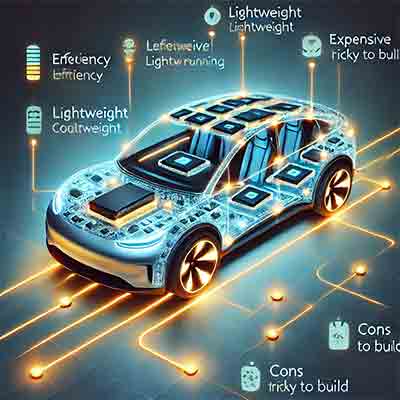How It Works
Imagine a toy car that runs on batteries. To make the car go fast and not waste battery power, it needs a super-smart switch to control how the energy flows from the battery to the wheels. In electric cars, these super-smart switches are made of something called gallium nitride,Gallium NItride Used in Evs or GaN for short.
Gallium nitride is like a magic helper. It’s better at handling electricity than older materials like silicon. Here’s why:
- It lets the electricity move faster.
- It wastes less energy as heat, which means the car can go farther on the same amount of battery.
- It’s smaller, so the electric parts inside the car can be lighter and tinier.
Pros of Gallium Nitride
- Efficiency: It makes sure the car uses less energy and can drive farther.
- Lightweight: The parts are smaller and lighter, so the car doesn't have to carry as much heavy stuff.
- Cooler Running: Less heat means the car doesn't need big, heavy cooling systems.
Cons of Gallium Nitride
- Expensive: It costs more money to make these parts than older materials.
- Tricky to Build: Making gallium nitride parts can be harder, like building a LEGO set with super tiny pieces.
- Durability: While they’re tough, they might not last as long in really tough conditions compared to some other materials.
Conclusion
In the end, using gallium nitride helps electric cars be more awesome—faster, more efficient, and better for the planet! But it’s still a bit pricey, so people are working on ways to make it cheaper and even better.
